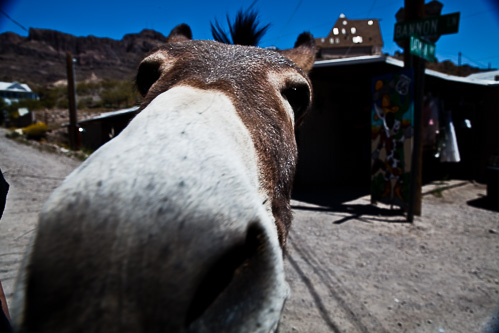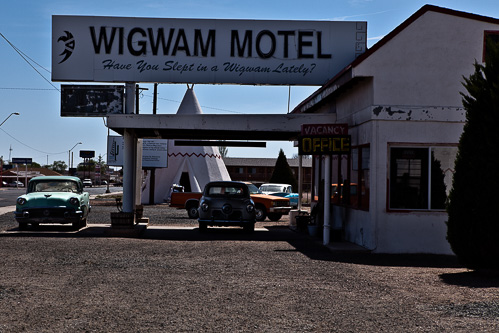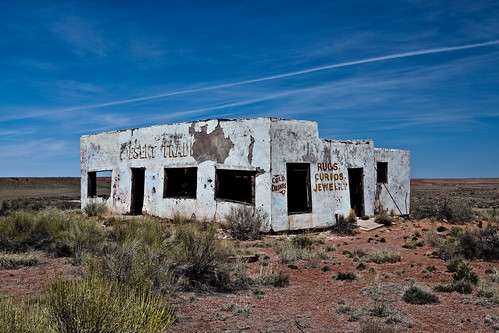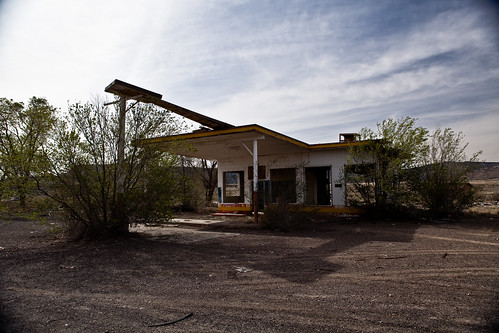At the end of April, I took a bit of vacation time and spent five days driving from San Francisco, CA to my hometown of Springfield, MO. While large portions of the journey were spent mindlessly blazing down the interstate on autopilot, some sections were devoted to sightseeing along the historic Route 66. The 2300 mile adventure was a trip back through eras long past.

Oatman, Arizona (population ~128) represents an early 20th century gold mining town turned tourist destination nestled in the Black Mountains. The wild burros descended from the gold prospectors’ original pack animals are one of the primary attractions. The main stretch of town is dedicated primarily to a number of historic buildings housing kitschy stores selling various knick-knacks, t-shirts, and other touristy souvenirs. Bags of carrots are also available for purchase for feeding to the “wild” burros.

The road beyond town is a precarious and winding path that cuts its way through the Black Mountains. There are a number of opportunities to pull off and enjoy the marvelous views of the terrain below. The route eventually leads back to the more well traveled interstate. Across the remainder of Arizona are several small towns which have in some small way managed to continue to exist without being entirely bypassed by the introduction of the modern highway system. Seligman, AZ, the inspiration for the Pixar movie Cars, is a flash back to the 1950’s with it’s themed shops and diners. Have lunch and look around before continuing on down the road to Holbrook, AZ where you can spend the night in the historic Wigwam Motel.

When the unending stretch of pavement known as I-40 was laid down, it bypassed many of the less direct paths of the old road. There are still a few remnants of the original that can be found out if you’re willing to get off the beaten path a bit. One such section is located in New Mexico on the edge of the Painted Desert. It takes following an apparent dead end service road which turns into a simple dirt road a while before arriving back on some of the roughest 30’s era pavement of the true mother route that still exists in this part of the country. Leading several miles away from the interstate into the desert, one starts to get a true
feeling of isolation and a sense of what it must have once felt like to travel across this expansive southwestern desert stretch.

The road eventually leads to a series of sights – the last crumbling remnants of the Painted Desert Trading Post on one side of the road and for the truly adventurous, petroglyphs carved high up in the rock walls of an adjacent mesa. Not much further down the road is the Dead Wash where the rusted out husks of cars lay against the side of a dry river bed, swallowed up by flash floods some unknown decades ago.

Traveling these historic routes, a common theme finally begins to emerge. The modernization of the national highway infrastructure slowly bypasses simple service stations, communities and eventually, seemingly entire civilizations. No longer a part of the beaten path, entire towns wither and die off. The structures that were once built to support the livelihoods of their occupants and driven by the commerce of westward movement are left abandoned. Lost in time and slowly ravaged by nature, they’ll eventually crumble back into the dirt on which they were built. For the moment they still stand – halfway between here and eternity – giving a glimpse back to days gone by. These might have been simpler eras full of hope. Now they serve as a haunting reminder of the price of progress for those willing to seek out their message.
